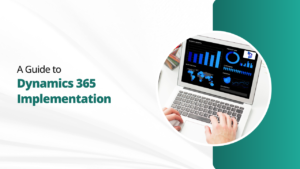In the world of modern technology, educational institutions are recognizing the immense value of Customer Relationship Management (CRM) systems to streamline student management and enhance engagement. By using CRM technology, educational institutions can effectively manage student data, improve communication, and optimize workflows. This comprehensive guide aims to provide an in-depth understanding of CRM for education and offer practical insights on implementing and maximizing its benefits.
What is CRM for Education?
CRM for Education means to use CRM technology and tools to manage educational affairs. It includes dealing with the relationship between students, teachers, alumni, parents, and stakeholders. It also involves organizing and utilizing data related to students’ academic performance, communication history, and interests.
The Importance of CRM in Education
CRM is essential in education as it enables institutions to better understand and cater to the needs of students, streamline processes, foster engagement, and make data-driven decisions. allows institutions to personalize communication and engage with students more specifically and meaningfully. By implementing CRM effectively, educational institutions can create a supportive and personalized learning environment that promotes student success and institutional growth.
Benefits of Using CRM for Education
Here are some key advantages of using CRM for education:
1. Improved Student Management:
CRM streamlines student management processes, such as admissions, enrollment, and record keeping. It centralizes student data, making it easily accessible and providing a complete view of each student’s information, academic performance, and engagement history. This provides decision-making and personalized support for students.
2. Communication and Engagement:
CRM systems provide the best communication tools which enable seamless and targeted communication with students, parents, teachers, and administrators. Through personalized messaging, email campaigns, and notifications, educational institutions can engage with stakeholders effectively, fostering stronger relationships and promoting active participation.
3. Personalized Support:
CRM for education allows institutions to identify students who may require additional support or interventions. By tracking student data, behavior patterns, and performance indicators, institutions can provide personalized assistance to at-risk students, ensuring their success and well-being.
4. Efficient Administrative Processes:
CRM automates repetitive administrative tasks, reducing manual effort and saving time for staff. Tasks such as document management, form submissions, and data entry can be streamlined, allowing staff to focus on more valuable activities, such as student support and engagement.
5. Alumni Relationship Management:
CRM is not limited to current students; it also helps in managing relationships with alumni. By maintaining a centralized database of alumni contacts, institutions can engage with alumni, foster connections, and leverage their expertise for the benefit of current students and the institution.
6. Institutional Growth and Reputation:
CRM for Education can contribute to institutional growth and enhanced reputation. Effective student management, personalized support, and efficient communication lead to higher student satisfaction and retention rates. This, in turn, attracts prospective students, builds a positive reputation, and helps in building a strong educational community.
7. Integration with Existing Systems:
CRM systems can integrate with other educational tools and systems, such as Learning Management Systems (LMS) and student information systems. This integration ensures seamless data flow and enhances the overall efficiency of educational operations.
How to Implement CRM for Education

Implementing a CRM system in the education sector can be highly beneficial for managing relationships with students, parents, alumni, and other stakeholders. Here are some steps to help you implement a CRM in education:
Steps to Implement CRM for Education:
- Determine what you want to achieve with the CRM system. Identify specific goals such as improving student retention, streamlining admissions, enhancing communication, or tracking alumni engagement.
- Evaluate your existing processes and identify areas where a CRM system can bring value.
- Research and select a CRM system that aligns with your requirements. You can also contact us and schedule a consultation call with us.
- Some popular CRM platforms used in education include Salesforce, Microsoft Dynamics 365, and HubSpot.
- Engage relevant stakeholders, including administrators, faculty, IT staff, and support personnel, to gather their input and ensure their buy-in
- Adapt the CRM system to suit your educational institution’s specific needs. Customize data fields, workflows, and reports to align with your existing processes and capture relevant information. Integrate the CRM with other systems you use, such as your student information system (SIS) or learning management system (LMS), for seamless data transfer.
- Provide staff training: Conduct comprehensive training sessions for the users who will be. Ensure they understand how to navigate the platform, input data, generate reports, and utilize the available features.
- Leverage the CRM system for education to enhance communication and engagement with students, parents, and other stakeholders.
CRM for Education by Tech Implement
Experience the transformative potential of Tech Implement’s CRM services designed specifically for the education sector. Our platform empowers you to streamline your processes, enhance student engagement, and boost overall operational efficiency. Contact us today to learn more about how our CRM can transform your educational institution.




